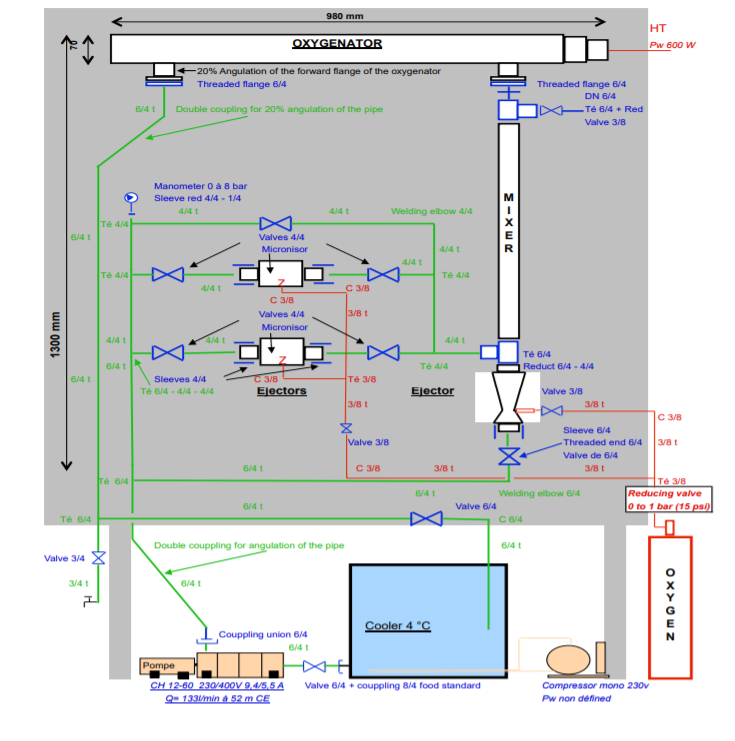Technology project for the decontamination of wastewater
Written by Fulmina Institut

Technology for wastewater decontamination
Using a-neutronic nuclear molecular polarization
This technology depollutes water while maintaining its natural structural quality and intrinsic vibration. It applies an electrostatic and magnetic field of several million electron volts at low frequencies on the treated fluids which has the effect of binding or untying the chain of molecular bonds thus eliminating all toxins (natural or chemical) and all odors.
Water in the world
Water is a major issue for our survival and for the survival of our planet. Honest experts and their reports testify to this, our world knows and will experience for the new generation a water crisis. By the way. The Director-General of UNESCO says: "Among all the crises of social or natural origin that humans face, the water crisis is at the heart of our survival and the survival of our planet Earth."
Water on land is either salty or permanently frozen; most of the fresh water is in the ice caps at the North and South Poles, which are now, unfortunately, melting. When we talk about the ice cap, we are talking about the sea ice, which took thousands of years to build up and which today disappears at a daily speed. Some glaciers have already lost a third of their surface area over a four-year period. This leads to a change in sea currents, as well as a general depletion of fresh water.
To give you some figures from international institutions, taking into account that these figures are totally below reality (it's like the radioactive consequences of nuclear disasters):
- It takes 10 liters of water to make one liter of gasoline, 295,000 liters to make 910 kilograms of paper, 86,300 liters to refine 910 kilograms of steel.
- One liter of oil can contaminate up to 2 million liters of water and one gram of PCBs (polychlorinated biphenyl: a manufactured chemical that lasts for many years) can make up to 1 billion liters of water unsuitable for aquatic life in freshwater.
- One gram of 2,4-D (a common household herbicide) can contaminate 10 million liters of drinking water.
- One drop of oil can make up to 25 liters of water unfit for consumption.
- 80% of diseases are due to water, in developing countries, but also in industrialized countries, which despite their archaic water treatment plants, filter water but do not take into account the virological and vibrational pollution of it.
- The water we drink represents only 1% of the water we consume.
- There are several hundred million inhabitants affected by water-related diseases.
- Waterborne diseases, also known as "dirty water" diseases, are the result of water contamination by human, animal and chemical waste. These diseases cause an estimated 24 million deaths per year, 10 millions of which are caused by diarrheal diseases.
- About 2 million tons of waste are dumped into rivers, lakes and streams every day. One liter of wastewater pollutes about eight liters of fresh water. According to calculations, there are about 12,000 km3 of polluted water in the world, which is more than all the water in the world's ten largest river basins at any time of the year.
- The volume of water available on Earth is 1.385 billion km3: 97.5% salt water (or 1.35 billion km3) and 2.5% fresh water (or 35 million km3).
- Fresh water comes from: 68.9% of glaciers and polar ice caps, 29.9% of groundwater, 0.9% of swamps and soil moisture and 0.3% of lakes and rivers.
- There are many places where surface water and groundwater are invaded by industrial, agricultural and municipal waste. According to the World Water Commission for the Twenty-first Century, more than half of the world's major rivers are so depleted and polluted that they endanger human health and poison surrounding ecosystems. In many major cities in the developing world, drinking water is contaminated. Only half of Southeast Asia's 550 million people have access to safe drinking water (237 million).
No matter who we are, where we live, what we do, we all depend on water. We need it every day, for many reasons. Water is essential to our health, food, transportation, irrigation and industry. It is essential for animals and plants, changes in colors and seasons. Yet, despite the importance of water resources to our lives and well-being, we increasingly disrespect them. We abuse it. We waste them. We pollute them, and forget how essential they are to our survival.
Water is the most abundant liquid on earth, it is the essential element of life. It has been the most studied and least understood Molecule, we have still not pierced its secret despite the ultra specialization of experimental techniques. This being due, to the non-acceptance by the so-called "Cartesian" science, of its qualities of memorization and its faculties of molecular prescriptions.
Scientific explanation of water
The physical properties are particular and unique:
- Higher density for liquid water than for ice.
- Very high specific heat of liquid water.
- Transition from boiling to freezing...
The five biological properties reveal different water qualities:
- Water constituting the cells.
- Water moisturizing molecules and proteins.
- Open water.
- Bound water (freezing of vaccines and embryos is only possible because 20% of cellular water remains liquid).
- A.D.N. binding water (proteins, amino acids).
In the contemporary theory of the "big bang", 4 and a half billion years ago (we think much more), superheated water vapor and carbon gave first CH4-HCN-C02, then the chains of life with bacteria, A. D.N., proteins, lipids... all bathed in the "original soup"...
When the human body consumes a molecule, it becomes the constituted mould of the hydrating water. The form of the water molecule maintains (by its memory) a disposition of atoms that permits the atom to re-synthesize again. It is the water molecule that keeps the souvenir of the structure and permits the reconstitution and the association of the molecules in more or less dense accumulations and of more or less life duration. The specificity of the substances that compose the molecule is equally sensible to the environment.
The distribution of vibrational energy between the various constituents of the “original broth”, has certainly taken place by means of specific hydration of the different metals and metalloids. The sensibility to different components of the vibrational energy received, manifests itself in aqueous environments in the form of archetypal and fractal organisational structure and liaisons, which is characteristic for each component (metals, etc). Metals associated with chelate carriers (organic molecules able to fix metal with coordinating liaisons) have, due to their specific energy, measured the necessary quantity of energy to realize the synthesis of the molecules carrying strong energy. As an example: magnesium known for its affinity with water (6 to 8 molecules of water for every ion Mg-+) combines with chlorophyll, and plays an essential role in the synthesis of glucose.
Water is therefore the support of life, witness the multiple cults that were consecrated to water in all traditions.
Structures of water
There are two groups of structural models :
- The homogeneous water: where the molecules are associated by hydrogen liaisons of length (A), energies (N) and variable angles (D).
- The heterogeneous water or discontinued water (free), being described as a mixture between many molecules in equilibrium. A free molecule can associate with other molecules in groups of 2, 3, 4 or 5 in the same milieu.
- Some Raman laser spectrographs (the Raman effect is sensitive to low energy interaction like the hydrogen liaisons (C. Lun, V. Lun, F. Rull et F. Sopron in J.-Md, Structures 81 in 1982, 1-10) are reputed to have demonstrated the co-existence of five forms of water.
- There would be a total of seven forms of water, they are, at large, very dependent of the environment and very sensitive to impurities, UV rays that can dissociate H+ and OH- and to other cosmic energy fluctuations, ground currents, magnetic and electromagnetic fields. One must notice that it is practically impossible to obtain two identical Raman spectrums, on a sample of water which was conserved in the same conditions, but which were taken and analysed at different moments in the same day.
- Water has a memory (K. Trincher, Water Res 15/1981, p. 433-448); it registers in its structure, through the hydrogen liaisons, seven forms with random geometric proportions. This is the registered history of its life.
- Water is so sensitive to the thought process, sounds, negative or positive energies, that its crystalline form at freezing temperature, changes its geometric form (see the works of Dr. Masaru Emoto).
- Also, the “water memory” manifests itself in experiences of magnetic field or activated by a vibrational oscillator.
- All the properties of water known to be “abnormal” always find themselves in liaison with Hydrogen. Each water molecule is susceptible to associate with a maximum of 4 other molecules of water; as a matter of fact, the structure of the H20 has the structure of a sphere that has on its surface 2 poles+ (the two Hydrogen atoms) and 2 poles- (the bachelor electrons of Oxygen).
- More than water itself, it is the Hydrogen liaison that seems to carry the mystery of life, and its capacity to associate with Oxygen.
- Low energy liaison, varies from a few tenth of a kilocalories to many tens of kilocalories (scale from 1 to 100 frequencies scale). It is essential to all biological molecules.
- By the Hydrogen liaison, the protein base pairs are associated within the D.N.A., and the Hydrogen liaison is at the origin of the structure of the protein function.
- Professor Hopfinger was saying, in regard to the Hydrogen liaison, that the only thing that we can be sure of, is that there is absolutely no rule that governs the geometry (fluctuating memory).
- The distance of Hydrogen liaison of water, varies according to the modifications of the environment, and is influenced by other substances present in the water. That distance is done and measured in pico-seconds.
- Liquid water cannot be a homogeneous milieu!
- Water is composed of different associations that can be ephemeral or durable according to its purity, not the quantitative but the qualitative one; as if to remind us that the existence of one individual can be ephemeral but life is eternal – which confers to water different energetic states. These structural modifications are so much more important that they vary in function of the temperature. Thus :
The specific heat (the capacity to store heat by unity of mass) of water passes by a minimum at 37° C;
Levels of resistance and molecular tension are observed between 20 et 25° C ;
The maximum of density is observed at 4° C. Additional reason why we treat our water at 3°C to fill it with Oxygen.
The environment at large, has an action on the ions and the dissolved molecules in the water and provoke specific interactions that influence physical factors like temperature, pressure, radiations...
The interaction solvent/solute between water molecules and dissolve molecules in water will manifest themselves by attractions or repulsions. Empédocle d'Agrigente [a philosopher, engineer and Greek doctor (from Sicilia) at 5th century B.C.] sustained that the four elements, were combining in different proportions, and that these combinations or separations were happening under the effects of specific attractions or repulsions similar to “love or hate”; the love interaction between dissolve substances in water are called hydrophilic interactions, and those hate interactions are called hydrophobias interactions.
Moreover, the influence of these substances can only be punctual or having a large radius. So, water organizes itself in structural accumulation of attractions under a hydrophilic substance around the molecules, or procures repulsion under the effect of a hydrophobia substance or energy.
The bio molecules are either hydrophilic (sugars, amino acids) or hydrophobic (lipid, certain groupings of proteins, alpha-interferon):
- The hydrophilic molecules, hydration happens by intermolecular Hydrogen liaisons, (between the water and solute) producing a short distance structure, in order to espouse the form to get closer, or by moving away when hydrophobic groupings are present in the molecule that produces a long distance structure. The water directly associated to a hydrophilic product is referred to as“bounded water” and the one located at a certain distance of the product and that is not implicated in the intermolecular Hydrogen liaisons are referred to as “free water”. Free water does not freeze at the same temperatures (conserving living cells) it has a prime importance in the protection of life (Pr Duclaux, Physique colloïdale et biologie, C.N.A.M., Herman Ed. 1942).
- The hydrophobic molecule strongly rejects the water. The later organizes itself by associating with the short Hydrogen liaisons, therefore strong, but at a distance of the hydrophobic substance, and will constitute a form around itself.
- Around the biopolymers, water organises itself following either the attraction or the repulsion of the groupings of atoms of these molecules; the water will dress them like a tight sweater and will not leave them.
- It is sufficient sometimes to withdraw only one water molecule so that the biological macromolecule changes completely its formation and bringing a collapse of its structure. Water is sensible to the modification of its energetic and climatic environment: the Raman-laser spectrum of a water coming out of a storm, or from a water having been submitted to radiation from full moon in the spring or autumn (when the radiation is the strongest), we obtain a water dissociated (H+ et OH-) from higher acid Ph than normal.
- Speaking of the vibrational energy (V.E.) of water and of the cell, certain scholars have indicated, base on their research, the importance of the osmosis intra and extra cellular, in the life of cells. They demonstrated that life was the result of equilibrium between waves emitted and waves received.
- The vibrational supports (V.S.) are the constituents of the cell, in particular of the D.N.A. The mediator in the reception or the emission of the V.E. - is none other than water that espouses the form of the vibrational receptor, and changes the structure in all cases where there is a change in the V.E. In the couple V.E./S.V. that some scholars are talking about, water is represented like this bar that separates the vibrational energy from the vibrational support.
- The brain is constituted of more than 3⁄4 of water, and we have a computer like response in which we do not have a binary system (0.1/1.0), but a seven state holographic septenary system or sevenfold men structures, based on the seven forms of water, and their combinations in quantitative and in qualitative bonding strength.
- When one absorbs a highly hydrophobic substance like a drug (neuroleptic, psychotropic), or one falls into a deep sleep, the brain works in closed circuit, it constructs programs fetched from the memory of water, or new programs resulting from the presence of hydrophobic substances. The mechanisms that put the water structures in play stemming from the biological reactions, from the psychic domain or from the dreams, could be referred to as biological liaisons, psychological liaisons and spiritual liaisons.
Technology for water decontamination
The a-neutronic Reactor using Tribo-Electric Induction for the Treatment of Fluids
The Tribo-Electric Induction Reactor, is a novel technology conceived for the reorganisation of the subatomic particles of a liquid. One of its characteristics is to demultiply an induction current by a factor that depends essentially on the nature of the liquid treated. In the case of water, using 1⁄4 of a watt of energy, it transforms this current in an induction field of 52 Mev (million electron-volts).
This characteristic, allows among other things, either to establish a huge force of electromagnetic repulsion typical of the treatment of used waters, or a fixation of micronized molecules of Oxygen to be integrated in liaisons with the Hydrogen molecules that are available in water, typical of the production of oxygenated water.
Here is a list of possible application of that technology :
Water treatment plants
Desalination of seawater
Regeneration of rivers and lakes
Regeneration of aquifers
Regeneration of oceans
Oxygenation of water by molecular integration
Regeneration of water for agriculture
Fabrication of a more resistant and flexible cement
Application in human medicine 10. Application in veterinary medicine
Application in fish farming
Application in athletics to protect the health of athletes (running, bicycle, tennis etc.)
Augmentation of life expectancy of membranes
This apparatus was recognized for its innovative quality. It qualified for two Master Patents; it was recognized by the Patent Corporation Treaty (PCT), at the European Patent (EP), and at the United States Patent Office (USA). These three levels of recognition touch the general ensemble of nations. They confirmed the unique character of that invention. The Master Patents give us the right to patent hundreds of other applications all related to the original Masters. They have an important role to play in all sectors of our society.
Nature of the patent versus the law of William Henry (1774 – 1836)
The challenge that we were presented with was to demonstrate that a specific law of physics represented a wall impossible to climb. How could we give back to the waters of our Planet, its original qualities to support life? How could we bring back the content of Oxygen that the contemporary waters had lost? How could we bring back life in our oceans?
The English physicist and chemist from Manchester had proclaimed the following law at the beginning of the 19th Century. This law had governed the minds and the orientation of most of the physicists for more than a century.
At constant temperature and saturation, the concentration of a gas dissolved in a liquid (C) is proportional to the partial pressure (P) exercised by the gas on that liquid. C = HP
Example : the dissolution of oxygen in a pure water, i.e. in the absence of mineral and at the presence of temperature of 0 degrees Celsius and with a pressure of one atmosphere, we will find a maximum of 14,6 particles per million of Oxygen into water.
This law applies to all dissolution of any gas into any fluid, but with completely different results depending on the nature of the gas employed and of the fluid implicated in the dissolution. However we demonstrated that we could integrate more than 120 particles of Oxygen per million into water.
The exceptional phenomenon of the reduction of the surface tension of electrons
When we augment considerably the quantity of molecular links inside of a fluid, we observe a very interesting phenomenon; the phenomenon of the reduction of the surface tension of the electrons in the new fluid.
When you lower the surface tension, we observe the following phenomenon :
An augmentation of the penetrating power of solvents.
A lowering of the ionic friction – major consequences in the field of semi-conductors where we need to augment the ionic mobility.
An augmentation of the fluidity potential.
An acceleration of the precipitation power.
A reduction of the power of evaporation.
An augmentation of the longevity of membranes.
An augmentation of the debit of filtration by unity of the mem- brane surface.
An augmentation of the debit of membrane separation per unity of surface.
An augmentation of the processes of reaction of the suppression of odours.
A reduction of the demand in Oxygen (DO) of bacterial micro- organisms.
The central observable phenomenon by nature of the patent is that the tension at the surface of the fluids is radically lowered at a very low level. In pharmaceutics, we can utilise this application in the integration and absorption of medications in order to reduce the toxic doses while augmenting its efficiency, in agriculture (see the illustration of our tomato roots), the reduction of fertilizers, the augmentation of nutrients and in big industry the reduction of chemicals made possible by this new power of penetration of solvents.
Problematic of the integration of a molecule of oxygen
Figure 1. Two water molecules are facing each other. These two molecules with a frame around them are maintained stable and permanent by the action of the strong nuclear force. If we introduce two molecules of Oxygen just in between the two hydrogen molecules facing each other, we then have to convince the two hydrogen molecules to integrate the two molecules of Oxygen by the creation of an atomic liaison that will give this new water molecule a stable link, but it is not permanent. The original link is still maintained. It is the role of the weak nuclear force to create this new link. And we are still in presence of water molecules H2O.
Figure 2. The roots of a tomato plant that has been fed with Oxygenated water; extract from Guy Montpetit Technologies. The reduction of the surface tension of electrons, provokes a growth that allows the plant to reach a height of 18 feet (6 meters) and produce hundreds of kilos of tomatoes. The duration of the growth is done in two months.
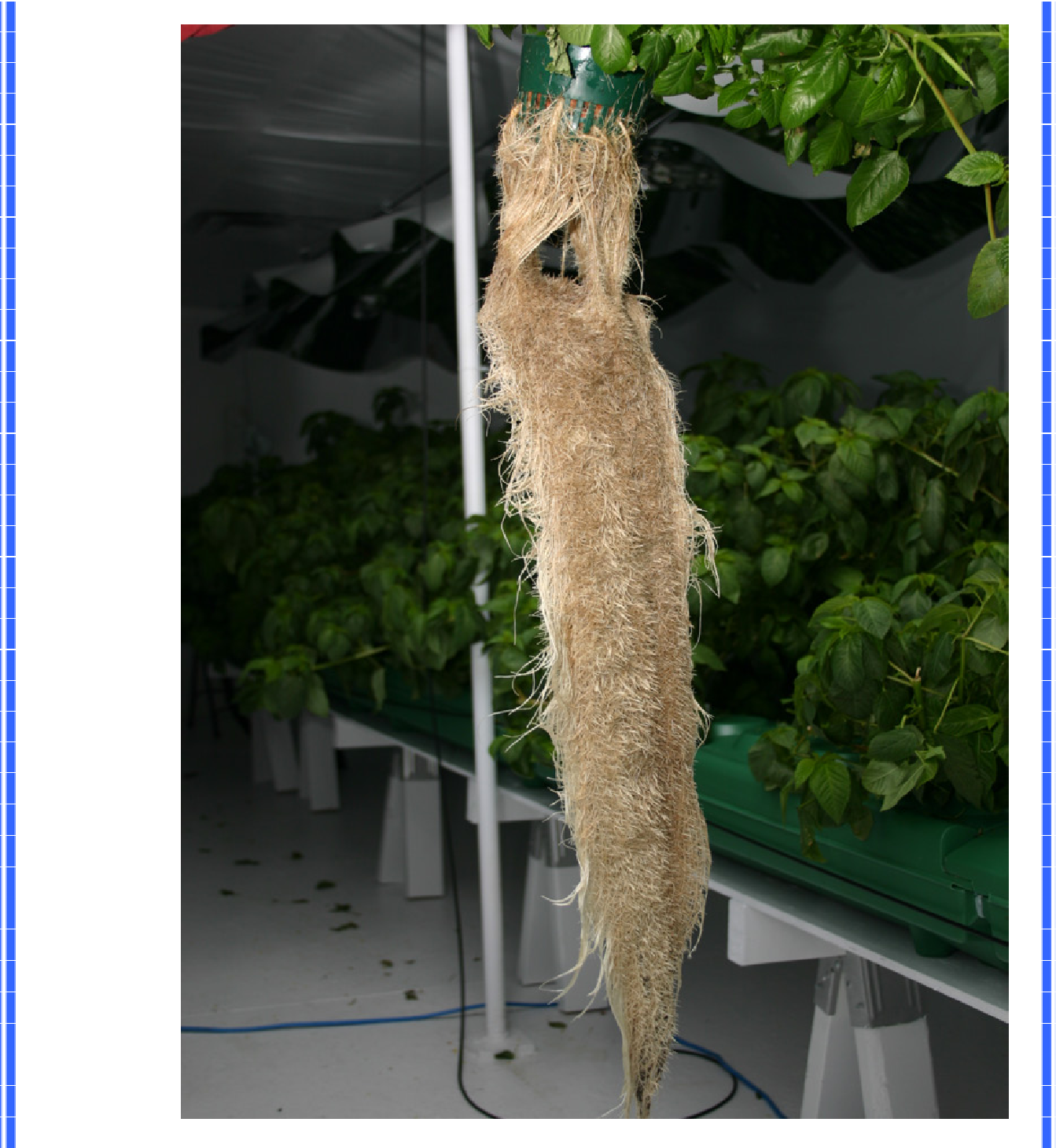
Illustration of a reactor :
Figure 3. This is an installation of a Tribo-Electric reactor. We distinguish the reactor, just below the power supply, as horizontal tube in stainless steel, with an entry vertical tube on the right and a vertical exit tube on the left. Micronizers are connected to the oxygen tank, leading to the mixer entry tube. The power supply provides 1⁄4 of a watt of energy. Water is pumped from cooling thank Figure 5. Water flows into the reactor via the Mixer (right vertical) and returns through the exit tube with a content in oxygen of 43.88 ppm.
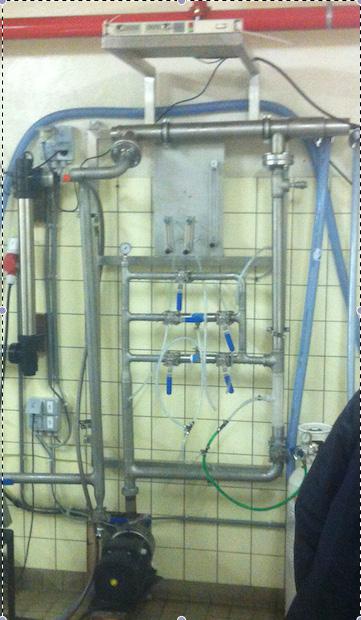
Figure 4. Diagram of the Oxygenator
Figure 5. Cooling Unit

To integrate oxygen into water we must bring its temperature at 3° C

Figure 6. Oxymeter Device for measuring the content of fixed oxygen into water. The oxygen will not evaporate from water at constant temperature. After passing through the reactor, the content in oxygen passes from 4 ppm of oxygen to 43.88 ppm, and in certain conditions up to 120 ppm.
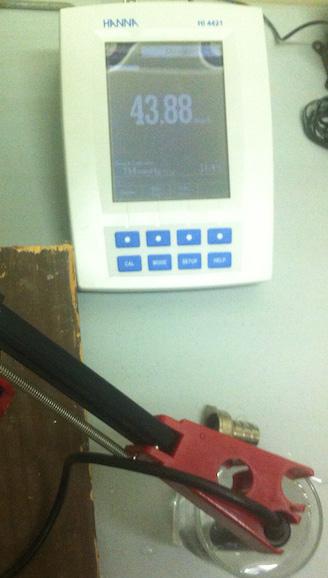
Figure 7. Internal components of the reactor
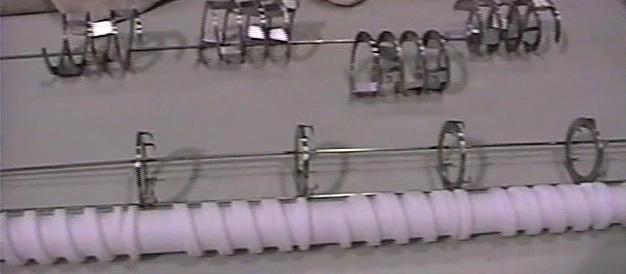
Figure 8. Other components part of the reactor
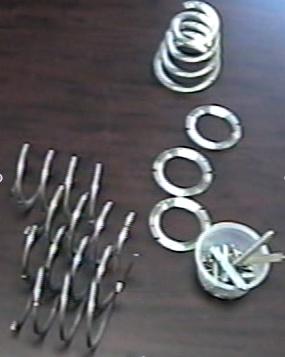
Figure 9. The reactor
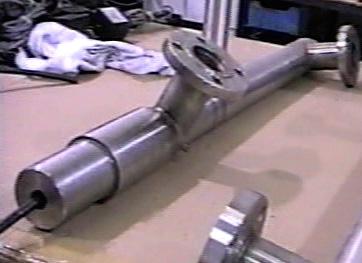
The scientific principles supporting the reactor
In 2012 at the CERN, in Geneva, Peter Higgs and a few other astrophysicists announced the discovery of a sub-atomic particle they called the boson. In 2013, in the company of Mr. François Englert, they were awarded the Nobel Prize in Physics for their discovery showing the link this particle entertained with the weak nuclear force. It also indicated how bosons could convince lonely atoms to associate with others having a complementary polarity (a positive atom is attracted by a negative one); this liaison links them to the nuclear mass of the ensemble, even when this stable link has not become a permanent one.
This reactor works essentially by the nuclear polarization of layers of particles. This is where the bosons play an important role, by calling into action the weak nuclear force and create agglomerations of atoms of the same polarity in certain applications, and in others to separate them. A vortex of cyclonic functions of attraction or repulsion of these molecules is the essential function of the reactor.
Returning to the problematic of integration (p. 15), a molecule H20 is stable and keeps being a water molecule until a major force comes and break the molecular link. As it is the case when we use fire under the water. If, in a milieu full of water molecules, I introduce quantities of oxygen molecules, none of these molecules will attach themselves to any other molecule. The mixture will change colour and become “milky” and after a short period of time, the oxygen will dissipate into the atmosphere, and water will regain its natural original limpidity.
The reactor has multiple functions. In the case we want to clean and decontaminate used waters from municipalities, we change the polarity of the power supply of the reactor, and we obtain the effect of repulsion instead of attraction of the molecules. This will simply break the link, the atomic liaison that forms the amalgam between the water acting as a solvent and all the particles that became toxic; the bad odours that accompanies toxins, also disappears. Once the attraction link is broken all toxins and their odours are eliminated and we obtain a precipitate of independent particles that have no negative impact on the environment.
One other function of the reactor is to reunite particles in order to fix their molecular link, liaison, and create a new desired amalgam. For example to recapture the natural qualities of water: LIFE, we integrate micronized molecules of a significant amount of oxygen that will find new partners in the available hydrogen molecules (see page 15). We are still in presence of water molecule (H O H).
In the case of agricultural applications, Figure 2 page 16, the oxygen plays a very important role once it is integrated to a molecule of water. The reduction of the surface tension of the electrons in the liquid, produces the very surprising result of a root of tomato plant of that size and complexity. In some cases we may want to add complementary nutrients, like nitrogen.
One highly desirable application : seawater desalination
What is remarkable in this technology is that it addresses fundamental questions and can be applied to a multiplicity of needs.
It is the case of potable drinking water in large municipalities and in deserted regions of the globe.
In many large cities, the aquifers have already been completely dried out and they are now obliged to fetch their water from far away, at exorbitant costs. This situation provokes the risk of even drying out the much need water for the production of food.
The tribo-electric reactor utilises a novel technology that allows us to produce 8 m3 of water per hour (132 litres minute) while consuming not more than 15 watts/hour.
We patented this technology that was initially thought of by Mr. Nicolas Tesla, tribo-electricity, the one produced by friction. When clouds for example are rolling over each others, their friction generate a difference of potential !!!...such that earth (the ground) will establish a contact with the accumulated charge of electrons in the clouds, sufficient to spark a blue and white arc known to everyone as THE THUNDER. The quantity of energy generated in one of these sparks is measured between 20 and 80 giga watts, the equivalent of 20 to 80 nuclear stations.
In seawater desalination we use the reactor to create the same kind of energy so as use the repulsion force to break the molecular links of salt in the water. The water desalination cost is therefore considerably reduced, almost insignificant compared to the popular techniques of reverse osmosis. Moreover, it produces through its mode of extraction, a quality of salt entirely free of its impurities, and pure and lively water without any iatrogenic effect (undesirable secondary effects). Seawater contains many different salts (See Addendum 1) most of them in very small quantities that only a nuclear technology can easily detect. No molecule, as small as it can be, can avoid detection by this molecular technology.
We were well inspired not to use industrial electricity to create this 52 Mev (52 millions electrons volts) necessary to trigger the action of the bosons that generate all energy needed to bring the weak nuclear force in action, to break this molecular links.
Construction of the Reactor
We included Figure 7 and Figure 8 on page 21, to illustrate the concept of the parts of the reactor that creates the necessary vortex (friction) that generates the 52 Mev (millions electrons volts). The electro-magnetic induction field that envelopes the water column in the reactor, subjects this column to the action of the “Higg’s bosons” that will in turn call in the weak nuclear force necessary either to attach the Oxygen molecule to their Hydrogen counterpart, or produce a repulsion force to break the links of existing molecules.
Once the total reserve of water has been treated through the reactor, in the case we want to regenerate, the water will contain a much higher content in oxygen than the one it had at the entry. This oxygen is fixed, and will only be liberated once absorbed by the human body.
Here is the liberation curve of the oxygen as a function of the ambient temperature. We use as a superior level of content, the amount of 120 ppm – taking as a reference the average content of oxygen in the human blood.
Maximum oxygen content measured and corrected according to temperature
 Celsius Temperature
Celsius Temperature
Budget approximation for the manufacturing of all reactors necessary to clean up the 190 great rivers of the world: approximately ----------- dollars. The work can be accomplished over a period of seven (7) years.
This budget and this material will be used to clean-up lakes and oceans.
For the water treatment plants, the budget is proportional to the size of the city and its population, and in consequence, the volume of daily water to be treated.
In Conclusion : The problem to solve :
The environmental problems of our planet are undeniably augmented if not caused by our WATER. It is charged quantitatively and qualitatively with toxins that already since many years are having an immediate effect on the transformation and pathological codifications of our environment and on its different biological supports (humans and vegetal).
The Earth cannot since decades, correctly treat all the toxins that we reject in our rivers and our oceans that pollute their waters.
Eminent specialists have already reported the damages.
In many different places of this planet, life is disappearing, there is a rupture of the ecosystem! And we are facing a new kind of destructive life, which is proliferating: viruses.
Water is life. If we want the human race to survive it is indispensable to safeguard qualitative and quantitative water capable of regenerating life.
There are solutions to the problems of the treatment of used waters charged with toxins, bacteria, viruses, and nitrates. But these treatments are not well adapted. The addition of Chlorine, bacteria and polymers, simply add new forms of information to water, and it does not give back to water its original life properties and equilibrium needed to regenerate life.
It is urgent today, to clean water from its physical and viral toxins, but it is equally important to maintain the planetary patrimony.
We must therefore treat the water in such a way that it becomes pure and healthy again for consumption, while we conserve its vitality! Vibrant and lively water is water in which life in evolution develops in a state of equilibrium.
Team Foundation Fulmina
Addendum 1. Principal salts dissolved in sea water with salinity of 35 g/L5
Anions | g/kg | mol/kg |
Chlorure (Cl−) | 19,3524 | 0,54586 |
Sulfate (SO42−) | 2,7123 | 0,02824 |
Hydrogénocarbonate (HCO3−) | 0,1080 | 0,001770 |
Bromure (Br−) | 0,0673 | 0,000842 |
Carbonate (CO32−) | 0,0156 | 0,000260 |
Fluorure (F−) | 0,0013 | 6,84E-5 |
Hydroxyde (HO−) | 0,0002 | 1,2E-5 |
Cations | g/kg | mol/kg |
Ion sodium (Na+) | 10,7837 | 0,46907 |
Ion magnésium (Mg2+) | 1,2837 | 0,05282 |
Ion calcium (Ca2+) | 0,4121 | 0,01028 |
Ion potassium (K+) | 0,3991 | 0,01021 |
Ion strontium (Sr2+) | 0,0079 | 9,02E-5 |
Ion lithium (Li+) | 1,73E-4 | 2,49E-5 |
Ion rubidium (Rb+) | 1,20E-4 | 1,404E-6 |
Ion baryum (Ba2+) | 2,0E-5 | 1,46E-7 |
Ions polyatomiques dont molybdène | 1,0E-5 | 1,04E-7 |
Ions polyatomiques dont uranium | 3,3E-6 | 1,39E-8 |
Ions polyatomiques dont vanadium | 1,9E-6 | 3,73E-8 |
Ion fer (Fe2+;Fe3+) | 1,3E-6 | 2,33E-8 |
Ions polyatomiques dont titane | 1,0E-6 | 2,09E-8 |
Ion aluminium (Al3+) | 1,0E-6 | 3,71E-8 |
Other Molecules | g/kg | mol/kg |
Eau (H2O) | 965 | 53,57 |
Acide borique (B(OH)3) | 0,0198 | 0,000320 |
Tetrahydroxyborate (B(OH)4−) | 0,0079 | 0,000100 |
Dioxyde de carbone* | 4,0E-4 | 9,09E-6 |
Composition of Seawater
Pourcentage in masse of the principal elements
Element | Masse | Element | Masse |
Oxygène (O) | 85,84 | Soufre (S) | 0,0905 |
Hydrogène (H) | 10,82 | Calcium (Ca) | 0,041 |
Chlore (Cl) | 1,935 | Potassium (K) | 0,040 |
Sodium (Na) | 1,078 | Brome (Br) | 0,0067 |
Magnésium (Mg) | 0,1284 | Carbone (C) | 0,00245 |
Copyright Fulmina Foundation
Powered by Froala Editor

